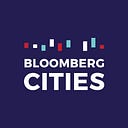Hopes for in-person school fade in a growing number of cities
Hopes that K-12 students might return to in-person school following summer break were dashed in many cities this week as a number of school districts, citing widespread coronavirus transmission in their communities, announced plans to start the year with all students learning from home.
Schools in Atlanta, Dallas, Houston, Los Angeles, San Diego, and San Francisco all said students would start the school year receiving virtual instruction, while superintendents in the Baltimore area and Miami-Dade County were leaning in that direction. In San Antonio, Mayor Ron Nirenberg convened a task force to examine the question of whether schools can reopen safely, but voiced concerns about surging COVID-19 caseloads locally. “Let me be very clear,” he said. “Schools are not ready to reopen in August in person.”
Other schools announced hybrid plans where students are expected to receive a mix of in-person and virtual instruction. Philadelphia schools plan to run on a split-schedule where students spend two days a week in the classroom and three at home, with an all-virtual offering for those who prefer that option. Anchorage, Alaska, Columbus, Ohio, New York City, and Seattle all have announced similar plans.
While mayors in many cities don’t control their schools or these decisions, a lot of the economic and social problems they’re wrestling with are intertwined with the outcome. When schools are shut down, many parents can’t go to work or must scramble to find childcare coverage, children who get meals at school must find food elsewhere, and the social and emotional health of children and their families suffers. Studies are showing that this spring’s experiment with online school set students back months in their learning, with the biggest learning losses among Black and Hispanic students.
“In addition to the educational aspects, school is a place where 20 million children get breakfast and lunch every day, and we’ve seen very high rates of hunger among children in the absence of in-person schooling,” Dr. Joshua Sharfstein of the Johns Hopkins Bloomberg School of Public Health said in a briefing for policymakers and media yesterday. Sharfstein also noted that in normal times, teachers and other school staff are often the ones who pick up on signs of child abuse. Schools are “safety nets for children,” he added. “Their very physical security is lost when kids are not in school.”
As it grows clearer in more places that school will at least start out either entirely or partially online, mayors will need to plan around the ripple effects. Yesterday, New York City announced that its hybrid reopening plan will come with childcare for 100,000 students on the days they’re attending school remotely. Nashville, Tenn., which is planning on virtual instruction through at least Labor Day, is using CARES Act funds to purchase 90,000 laptops and 17,000 mobile internet hotspots to make sure children from families with low incomes are able to get online. And Houston will keep up its ongoing efforts to distribute free meals to students — 80 percent of whom qualify for free or reduced-price lunch.
Debates about whether, when, and how to reopen schools have been raging for several weeks. Citing evidence that the coronavirus infrequently causes severe illness in children, President Trump has threatened to cut funding for schools that don’t fully reopen for the new school year, a point that his press secretary underlined yesterday: “When he says open, he means open and full, kids being able to attend each and every day.” Meanwhile, teachers unions have pushed back against in-person instruction, citing health risks for the adults working in schools, especially those who are older or have underlying health conditions.
Sharfstein and several colleagues from Johns Hopkins argued that it’s possible to reopen schools safely, as Denmark, France, Germany, and others have shown, with precautions such as physical distancing and keeping small groups of students together throughout the day rather than mixing widely. But they also noted that those countries did so from a position of having their epidemics under control, which is not the case in a growing number of U.S. states.
“A responsible strategy starts with making sure the levels of transmission and illness in the surrounding community are low to start with,” said Dr. Jennifer Nuzzo, who suggested this may require political leaders to reset their priorities when it comes to reopening the economy. “In order to safely reopen schools, communities should give hard thoughts about what businesses and other public venues they allow to open or stay open — and for certain, should prioritize the reopening of schools before other businesses, things like restaurants or bars, that may lead to higher risks of transmission in the surrounding community.”
